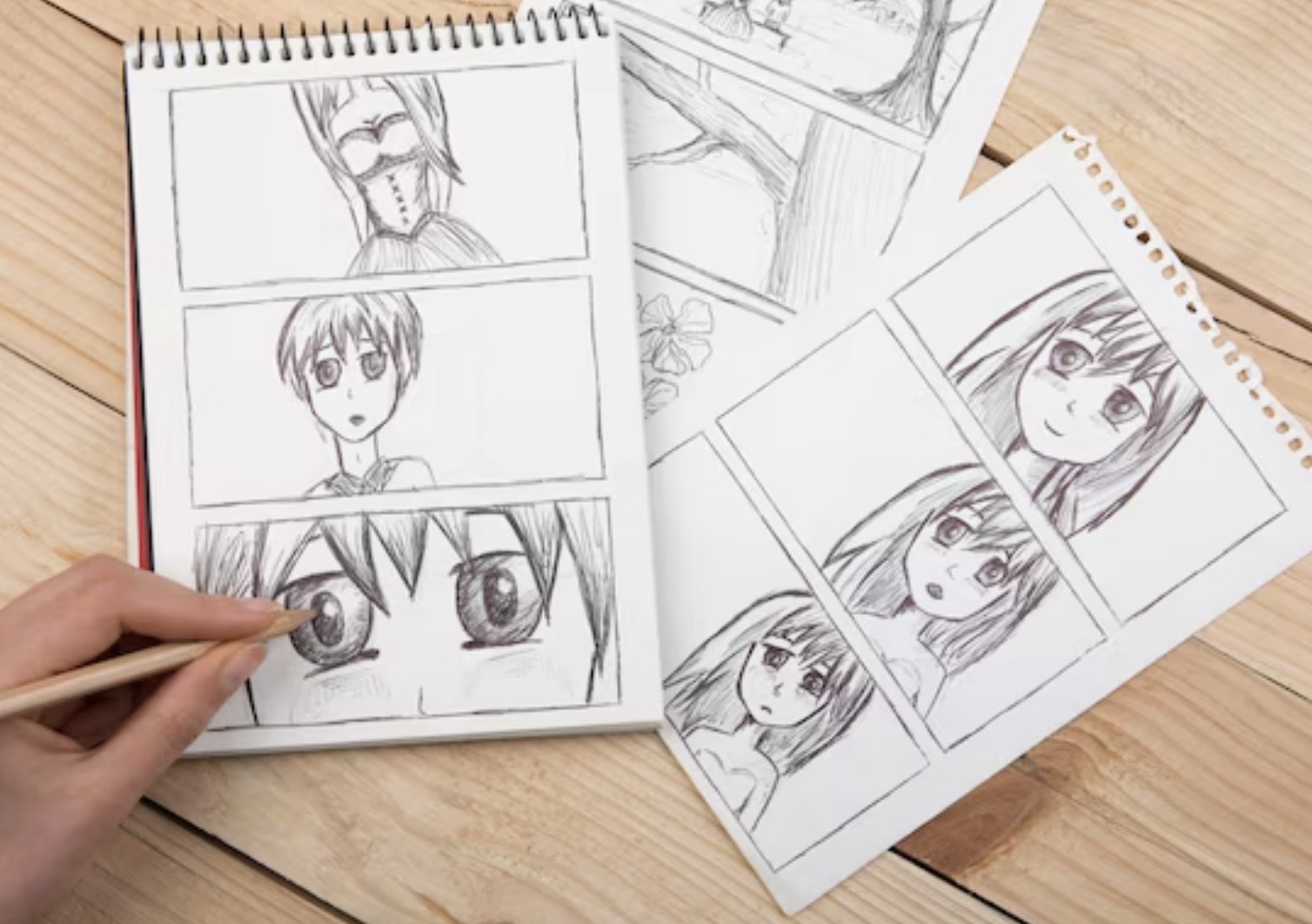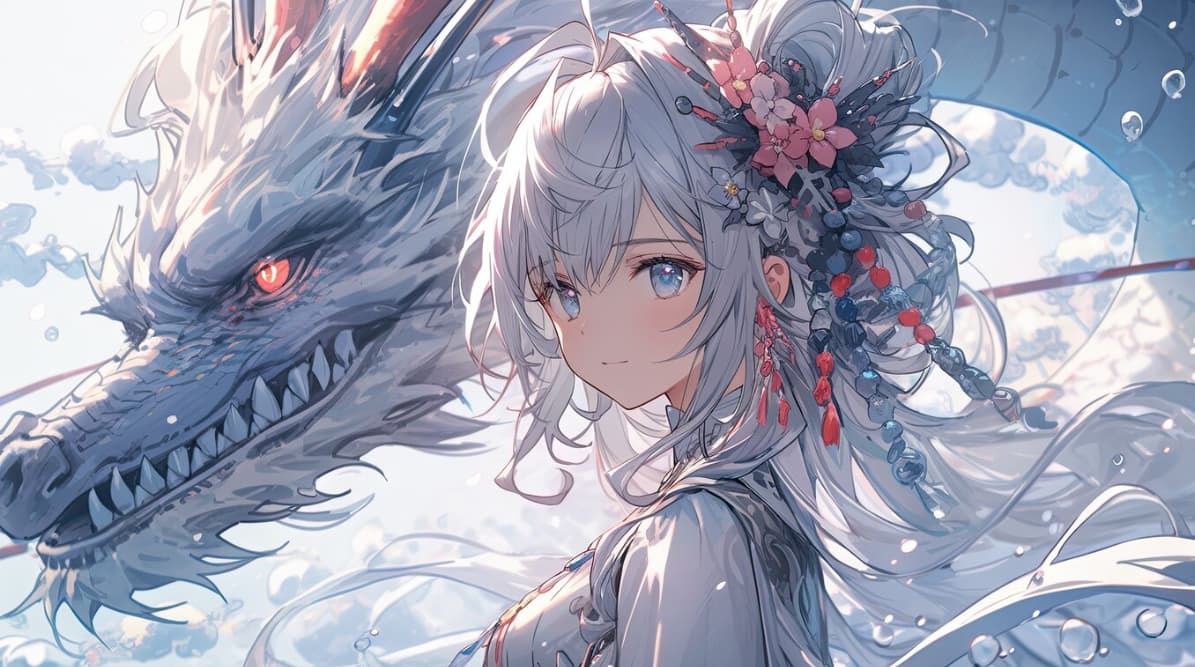Anime animation, with its distinct visual style and captivating storytelling, has captured the hearts of audiences worldwide. The process of creating anime involves meticulous planning, skilled craftsmanship, and attention to detail. From the initial concept to the final distribution, each step plays a crucial role in bringing these vibrant and expressive animations to life. In this comprehensive guide, we will delve into the intricate process of creating anime, exploring each step in detail and shedding light on the artistry behind this beloved form of entertainment.
Step-By-Step Guide to Creating an Anime Animation
Step 1: Planning and Pre-Production
The planning and pre-production stage is crucial in setting the foundation for anime animation. This phase involves conceptualizing the storyline, developing characters, and outlining the overall visual style of the animation. It’s a collaborative effort that brings together writers, directors, and artists to brainstorm ideas and establish the creative direction of the project.
Key Elements of Planning and Pre-Production:
- Story Conceptualization: This stage involves brainstorming and refining the core idea of the anime, including its plot, themes, and characters. Writers and creators work together to develop a compelling narrative that resonates with the target audience;
- Character Design and Development: Creating memorable and visually striking characters is essential in anime production. Character designers craft detailed profiles, defining each character’s appearance, personality traits, and role within the story;
- Visual Style and Art Direction: Establishing the visual aesthetic of the anime is a pivotal aspect of pre-production. Art directors and concept artists collaborate to define the overall look and feel of the animation, including the use of color palettes, artistic motifs, and stylistic elements.
| Element | Description |
|---|---|
| Story Conceptualization | Brainstorming and refining the core idea of the anime, including its plot, themes, and characters. |
| Character Design | Crafting detailed profiles, defining each character’s appearance, personality traits, and role. |
| Visual Style | Defining the overall look and feel of the animation, including color palettes and artistic motifs. |
The meticulous planning and preparation during this phase lay the groundwork for the subsequent stages of anime production, ensuring a cohesive and compelling creative vision.
Step 2: Storyboarding Techniques
Once the initial concept and visual direction are established, the next step in the anime animation process involves storyboarding. Storyboards serve as a blueprint for the animation, providing a visual representation of key scenes, camera angles, and character movements.
Components of Effective Storyboarding:
- Scene Layout and Composition: Storyboard artists meticulously plan the composition of each scene, determining the placement of characters, background elements, and focal points within the frame;
- Sequential Narrative Flow: A well-crafted storyboard effectively conveys the flow of the story, capturing the progression of events and character interactions in a series of interconnected panels;
- Dynamic Pacing and Framing: Through varying panel sizes and compositions, storyboard artists create a sense of rhythm and visual dynamism, enhancing the overall impact of the narrative.
| Storyboarding Component | Description |
|---|---|
| Scene Layout and Composition | Meticulous planning of the composition of each scene, determining the placement of characters and elements. |
| Sequential Narrative Flow | Conveying the flow of the story, capturing the progression of events and character interactions. |
| Dynamic Pacing and Framing | Creating a sense of rhythm and visual dynamism through varying panel sizes and compositions. |
Effective storyboarding is essential in translating the written script into a visual format, providing a roadmap for the subsequent animation process.
Step 3: Voice Acting
Voice acting breathes life into the characters, infusing them with personality, emotion, and depth. During the voice acting phase, talented actors lend their voices to the animated characters, delivering performances that resonate with the audience.
Aspects of Voice Acting in Anime:
- Character Interpretation: Voice actors immerse themselves in the personalities of their characters, interpreting their traits, motivations, and emotional nuances to deliver authentic performances;
- Emotional Expressiveness: From subtle nuances to powerful outbursts, voice actors convey a wide range of emotions, adding depth and resonance to the characters they portray;
- Lip-Sync and Timing: Achieving seamless lip-sync and precise timing is crucial in anime dubbing, ensuring that the characters’ dialogue aligns seamlessly with their on-screen movements.
| Voice Acting Aspect | Description |
|---|---|
| Character Interpretation | Immersion in the personalities of characters, interpreting their traits, motivations, and nuances. |
| Emotional Expressiveness | Conveying a wide range of emotions, adding depth and resonance to the characters’ performances. |
| Lip-Sync and Timing | Achieving seamless lip-sync and precise timing in anime dubbing, ensuring dialogue synchronization. |
The collaboration between voice actors, directors, and sound engineers results in captivating performances that enhance the overall storytelling experience.
Step 4: Key Animation
Key animation forms the backbone of the anime production process, involving the creation of the primary drawings and layouts that define the movement and visual style of the animation.
Key Aspects of Key Animation:
- Movement and Dynamics: Key animators bring characters and scenes to life through dynamic movement, fluid gestures, and expressive actions, capturing the essence of the characters’ personalities;
- Consistency and Quality: Maintaining consistency in character designs, proportions, and visual style is paramount in key animation, ensuring a cohesive and polished final product;
- Storyboard Interpretation: Key animators translate the storyboarded scenes into detailed drawings, infusing them with energy, emotion, and visual impact.
| Key Animation Aspect | Description |
|---|---|
| Movement and Dynamics | Bringing characters and scenes to life through dynamic movement, fluid gestures, and expressive actions. |
| Consistency and Quality | Maintaining consistency in character designs, proportions, and visual style for a polished final product. |
| Storyboard Interpretation | Translating storyboarded scenes into detailed drawings, infusing them with energy, emotion, and impact. |
The meticulous craftsmanship of key animators lays the groundwork for the subsequent stages of animation, shaping the visual identity of the anime.
Step 5: In-Between Animation
In-between animation, also known as “interpolation” or “tweening,” fills the gaps between keyframes, smoothing out the motion and adding fluidity to the animation.
Significance of In-Between Animation:
- Motion Fluidity: In-between animators refine the movement sequences, ensuring smooth transitions between key poses and enhancing the overall fluidity of character motions;
- Detail Enhancement: This stage allows for the addition of subtle details and secondary motions, enriching the animation with nuanced movements and lifelike gestures;
- Timing and Rhythm: In-between animation contributes to the precise timing and rhythmic cadence of character movements, synchronizing them with the audio and enhancing the visual storytelling.
| In-Between Animation Significance | Description |
|---|---|
| Motion Fluidity | Refining movement sequences, ensuring smooth transitions between key poses and enhancing fluidity. |
| Detail Enhancement | Adding subtle details and secondary motions, enriching the animation with nuanced and lifelike gestures. |
| Timing and Rhythm | Contributing to precise timing and rhythmic cadence of character movements, enhancing visual storytelling. |
The meticulous attention to detail in in-between animation elevates the overall quality and cohesiveness of the animation.
Step 6: Background Art and Animation
Background art and animation play a pivotal role in establishing the immersive world in which the characters inhabit, setting the stage for the unfolding narrative.
Elements of Background Art and Animation:
- Environmental Atmosphere: Background artists create rich and evocative environments, capturing the mood, atmosphere, and cultural nuances of the settings depicted in the animation;
- Spatial Depth and Perspective: Through the use of perspective and spatial cues, background artists imbue the scenes with depth, creating a sense of scale and immersion for the audience;
- Dynamic Background Animation: Moving backgrounds and environmental effects add vibrancy and dynamism to the animation, enriching the visual storytelling experience.
| Background Art and Animation Element | Description |
|---|---|
| Environmental Atmosphere | Creating rich and evocative environments, capturing the mood, atmosphere, and cultural nuances. |
| Spatial Depth and Perspective | Imbuing scenes with depth through perspective and spatial cues, creating a sense of scale and immersion. |
| Dynamic Background Animation | Adding vibrancy and dynamism to the animation through moving backgrounds and environmental effects. |
The synergy between background art and animation enhances the visual narrative, immersing the audience in captivating and intricately detailed worlds.
Step 7: Digital Processing
With advancements in technology, many aspects of anime animation have transitioned to digital platforms, offering new tools and techniques to streamline the production process.
Advantages of Digital Processing:
- Efficiency and Flexibility: Digital tools enable artists to work with greater efficiency, offering features such as layering, editing, and real-time previews to streamline the creation process;
- Visual Effects Integration: Digital processing facilitates the integration of visual effects, enhancing the animation with dynamic lighting, particle effects, and atmospheric enhancements;
- Workflow Optimization: From color grading to compositing, digital processing streamlines various aspects of post-production, allowing for seamless refinement and enhancement of the final visuals.
| Digital Processing Advantages | Description |
|---|---|
| Efficiency and Flexibility | Enabling greater efficiency through features such as layering, editing, and real-time previews. |
| Visual Effects Integration | Facilitating the integration of visual effects, enhancing the animation with dynamic lighting and effects. |
| Workflow Optimization | Streamlining various aspects of post-production, allowing for seamless refinement and enhancement of visuals. |
The integration of digital processing tools enhances the creative possibilities and efficiency of anime production, contributing to the overall visual appeal of the animation.
Step 8: Post-Production
During the post-production phase, the final touches are added to the animation, including editing, sound design, and visual enhancements, to ensure a polished and cohesive end product.
Components of Post-Production:
- Editing and Sequencing: Editors fine-tune the pacing and sequencing of scenes, ensuring a cohesive and engaging flow of the narrative;
- Sound Design and Mixing: Sound engineers craft immersive soundscapes, incorporating ambient sounds, music, and effects to heighten the emotional impact of the animation;
- Visual Enhancement and Polishing: Color grading, visual effects, and final touch-ups elevate the overall visual quality of the animation, enhancing its cinematic appeal.
| Post-Production Components | Description |
|---|---|
| Editing and Sequencing | Fine-tuning the pacing and sequencing of scenes to ensure a cohesive and engaging flow of the narrative. |
| Sound Design and Mixing | Crafting immersive soundscapes, incorporating ambient sounds, music, and effects to heighten emotional impact. |
| Visual Enhancement | Color grading, visual effects, and final touch-ups to elevate the overall visual quality and cinematic appeal. |
The meticulous attention to detail in post-production adds depth and polish to the animation, elevating its overall impact.
Step 9: Distribution
The final phase of the anime animation process involves distribution, where the completed animation is made available to audiences through various platforms and channels.
Distribution Channels and Strategies:
- Broadcast and Streaming Platforms: Anime productions are distributed through television broadcasts and online streaming platforms, reaching a global audience of enthusiasts;
- Home Video Releases: Physical media and digital releases allow fans to own and enjoy their favorite anime titles at their convenience, often accompanied by bonus content and special features;
- International Licensing and Localization: Through licensing agreements and localization efforts, anime reaches diverse international markets, catering to a broad spectrum of audiences.
| Distribution Channels and Strategies | Description |
|---|---|
| Broadcast and Streaming Platforms | Reaching a global audience through television broadcasts and online streaming platforms. |
| Home Video Releases | Providing physical and digital releases with bonus content, allowing fans to enjoy their favorite anime titles. |
| International Licensing and Localization | Expanding reach through licensing agreements and localization efforts, catering to diverse international markets. |
The distribution phase ensures that the anime animation reaches its intended audience, fostering engagement and appreciation among fans worldwide.
The Art of Color and Lighting in Anime Animations

The use of color and lighting is essential in the production of anime animations. The color palette used in anime is typically vibrant, dynamic, and highly saturated, resulting in a visually stunning and captivating final product.
Cel shading is a commonly used technique in anime, where shading is applied to give the illusion of depth and dimension, creating a 3D effect. This method is popular because it allows for a more fluid and dynamic animation style.
Lighting techniques also play a crucial role in setting the mood and atmosphere in anime. The lighting can range from bright and cheerful to dark and foreboding, depending on the story and characters’ needs.
Various lighting techniques, such as rim lighting, backlighting, and ambient lighting, are used to add depth and dimension to the animation, making it more immersive and engaging for the audience.
The color palette in anime is carefully selected to match the tone and ambiance of each scene. Bright colors are often used in action scenes or with lively characters, while muted colors are reserved for more emotional or dramatic moments.
Moreover, the color palette is also used to depict the time of day and setting, with warm colors representing daytime scenes and cool colors for nighttime scenes.
Cel shading is a critical element in creating a distinct and captivating animation style. This technique involves using 2D shading techniques on a 3D model to give it a flat and two-dimensional appearance, resulting in a more fluid and dynamic animation style that is challenging to achieve using traditional 3D animation methods.
Music and Sound Design in the Anime Animation Process

The process of designing sound effects for animated movies involves the creation and incorporation of various sounds into different elements of the animation, such as:
- The movements of characters;
- Environmental noises;
- Special effects.
These sound effects play a crucial role in adding realism and enhancing the visual impact of the animation.
In addition to sound effects, background music is also a vital component of anime animation. The right choice of background music can set the tone and atmosphere of each scene, creating an emotional connection with the audience.
Different types of music, such as orchestral, rock, or electronic, can also help establish the genre of the animation and give it a distinct personality.
Sound editing is another essential aspect of the anime animation process. It involves fine-tuning and adjusting the sound elements to create a seamless and immersive experience for viewers.
This includes controlling the volume of different sound elements and incorporating sound effects and background music.
The selection of sound effects in anime animation can vary greatly, depending on the scene and desired effect. For instance, the sound of footsteps on various surfaces can convey a sense of movement and action, while the noise of an unsheathed sword or a fired gun can add tension and excitement to an action sequence.
Background music also plays a significant role in creating a specific emotional impact on the audience. For example, soft and slow music can enhance intimacy and closeness in a romantic scene, whereas fast-paced and energetic music can heighten the sense of urgency and thrill in an action scene.
Using Digital Tools to Speed Up the Production

The use of digital tools in animating movies has significantly improved the speed and efficiency of the production process. Popular digital tools used in anime animation include Toon Boom Harmony, Adobe Animate, and TVPaint, which offer a range of features such as drawing, coloring, and timeline manipulation.
One particular tool that has revolutionized anime animation is 3D modeling software. This allows animators to create and manipulate 3D objects and characters, making it easier to achieve complex movements and animations. Additionally, these programs also provide tools for texturing, lighting, and rendering, resulting in more realistic animations.
The introduction of digital tools has greatly reduced the time needed for production compared to traditional techniques where each frame had to be hand-drawn. With digital tools, multiple frames can be created and edited simultaneously, resulting in high-quality animations being produced in a shorter period of time.
Furthermore, digital tools offer greater creative control and flexibility. Animators can easily make changes to the animation, add or remove frames, and adjust timing and pacing with just a few clicks. This allows for a more collaborative and iterative animation process where adjustments can be made quickly and efficiently.
Conclusion
The art of creating anime animation is a multifaceted and intricate process that involves meticulous planning, skilled craftsmanship, and technological innovation. From the initial stages of conceptualization and pre-production to the final distribution of the completed animation, each step plays a crucial role in shaping the vibrant and captivating world of anime.
Through this comprehensive guide, we have explored the step-by-step journey of creating anime animation, delving into the intricacies of planning, storyboarding, animation techniques, color and lighting, music and sound design, as well as the integration of digital tools to expedite production workflows. The collaborative efforts of writers, artists, animators, voice actors, and sound engineers converge to bring compelling narratives and visually stunning animations to life.



